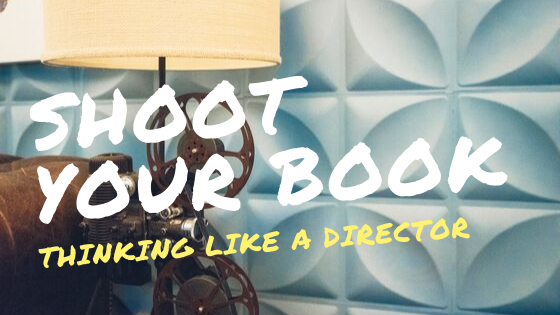Writing a novel is rather like shooting a film. Only, unless you’ve teamed up with a fellow writer, you’re in charge of ALL the departments involved in the production.
Set Design. Where does your novel take place? If it’s set in New York City, for instance, you’ll need to decide, fairly early on (i.e., the drafting stage), how many different locations you’ll need. While it might be fun to visit all the major tourist attractions, you SHOULDN’T (really, you shouldn’t) eat up valuable screen (page) time, hopping from scenic spot to scenic spot, for the sheer fun of it. If Johnny Hero has no better reason for a visit to the Statue of Liberty than a photo opportunity, you should probably scratch it off the list. If, however, he’s taking a friend who’s recently emigrated from a country with an oppressive political regime, by all means, go to Lady Liberty.
Photography. A writer’s choice of words affects how the reader sees a particular object. Even an object as simple as an apple can be transformed by the eye of its beholder. A hungry orphan who lives upon musty oats and stale bread would cherish a fresh apple as a treasure, while a spoilt child who eats gobs of candy for dessert would probably scorn it as “garbage.”
Visual Effects. When we are writing any scene in which a heavy amount of action takes place, we need to consider how best to convey that scene. This includes literal camera angling. Like any director, we want to get as much bang for our proverbial buck as we can. While it might be tempting to string a series of explosions together (hell, it works for some directors–we’re looking at you, Michael Bay), visual effects are just as important in low action scenes as high ones. The key is emphasis. Johnny Hero reaches out to grasp the hand of the love of his life, catches it, and walks slowly into the fade out, still holding it. Happy ending.
Lastly, but most importantly, editing. This can be the worst part. I tuned into a commentary of Avengers: Endgame. The production team admitted to reviewing certain key scenes of that movie HUNDREDS of times to get them right. Sadly, this translates into MORE work for you, the writer. Agreed. But if this were EASY, we’d have a hell of a lot more competition.
Once you’ve pulled together that first draft, take a little time to review each aspect of your production. Are your sets well chosen? Could you move your characters from one location to another without them batting an eye? If so, you may want to rethink your location. You may be missing an opportunity to exploit setting in the narrative. A teenaged couple’s first sexual experience is going to be a lot different depending on whether they hook up in an abandoned cabin in the woods vs. a parent’s bedroom in the family home. Are you getting the most out of your props? Does the camera linger longer on the things that matter vs. the things that are just background? A new pair of shoes that cost the teenaged heroine her entire paycheck vs. a shirt that the heroine wears once in the story for about two (reader) minutes. Are the scenes that matter drawn out (that first kiss) and the scenes that don’t cut short (we really don’t need to see Johnny Hero floss)? Are those clever, but ultimately unnecessary scenes cut from the production to lessen the air time. Kill your darlings.
That’s a cut!

